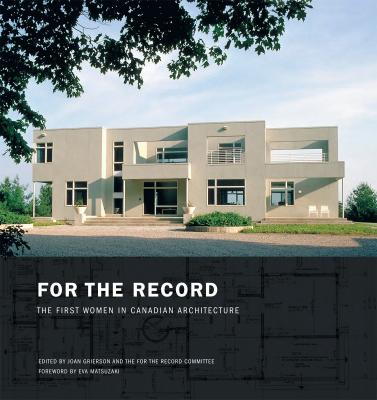For the Record. Joan Grierson
Читать онлайн.| Название | For the Record |
|---|---|
| Автор произведения | Joan Grierson |
| Жанр | Архитектура |
| Серия | |
| Издательство | Архитектура |
| Год выпуска | 0 |
| isbn | 9781770706415 |
Shelagh Macdonnell Rounthwaite
Isobel Grace Stewart
Jean Taylor Strange
Joan Robinson Grierson
Ruthetta Kaplan Reiss
1950s
Lennox Grafton
Catherine Currie Smale
Margaret Gisborne Christie
Marjorie Sewell Shepland
Audrey Koehler Christie
Joan Burt
Joanna Barclay de Tolly Ozdowski
Kathleen Connor Irvine
Mary Patterson Clark
Monica Nomberg
Natalie Salkauskis Liacas
EVENTS
LIFE
This decade is known as the Roaring Twenties. Women bob their hair and smoke in public. The flapper dress appears and the Charleston hits the dance floor. Movies, radio and the gramophone replace vaudeville and bring entertainment into the home.
MODEL T FORD 1922 TOURING CAR. By 1927 the Ford Motor Co.had produced 15 million automobiles.
WASSILY CHAIR, designed at the Bauhaus by Hugarian-born Marcel Lajos Breuer in 1926, manufactured by vienna’s Gebrüder Thonet.
HOUSES OF PARLIAMENT, Ottawa, Ontario, 1916–1927, Pearson & Marchand, Architects; EDMONTON PUBLIC LIBRARY, Edmonton, Alberta, 1923, G.M. MacDonald and H.A. MacDonald and H.A. Magoon, Architects; PLAN OF THE GARDEN VILLAGE FOR DOMINION STEEL PRODUCTS CO., Of Brantford, Ontario, 1923, Gray, Architect, AIA.
STATISTICS 1921 POPULATION OF CANADA 8,787,949 Population of U.S. 105,710,620 In the 1920s the urban population in Canada surpassed that of the rural areas. Architecture graduates in Canada 3 WOMEN 135 men
BOOKSJalna by Mazo de la Roche; The Waste Land by T.S. Eliot; Winnie the Pooh by A.A. Milne.
FILMSThe Gold Rush, starring Charlie Chaplin; The Jazz Singer, starring Al Jolson; Nanook of the North, the first feature-length documentary.
RADIO Sports; Will Rogers; the Metropolitan Opera.
MUSIC Bessie Smith records the blues; Louis “Satchmo” Armstrong joins King Oliver’s jazz band; George Gershwin composes Rhapsody in Blue.
ART Emily Carr exhibits at the National Gallery and begins an association with the Group of Seven.
ARCHITECTURE
In Canada in the 1920s, Beaux-Arts Neoclass.mapicism and the Gothic Revival continued to dominate architectural design, especially for public buildings such as Union Station in Toronto, the Edmonton Public Library, and the Parliament Buildings in Ottawa. This was all about to change.
The modernist movement in architecture was initiated by a small group of architects in Europe, among them Walter Gropius and Ludwig Mies van der Rohe in Germany, Le Corbusier in France, and J.J. Oud in Holland. In 1919, Gropius founded the Bauhaus, a design school that sought to relate art and architecture to technology and the practical needs of modern life. In 1923, Le Corbusier wrote Vers une architecture (Towards a New Architecture), advocating functional design, honest use of materials and basic geometric shapes. (In Canada, the igloo would have met these requirements.)
In England, Elisabeth Whitworth Scott won the 1928 international competition for the Shakespeare Memorial Theatre in Stratford-upon-Avon. It was the first major public building in England to achieve a dignified effect without recourse to historical sources. Women were making an appearance as planners as well; the MIT-educated architect Greta Gray designed a garden village for the workers at Dominion Steel in Brantford, Ontario, as early as 1923.
In Canada, new ideas in design were absorbed slowly, with historical styles continuing to dominate. There were six schools of architecture in Canada at this time. At the University of Toronto, architecture was a four-year course with graduating class.mapes of less than ten students; the degree granted was a Bachelor of Science until 1923, when it became a Bachelor of Architecture.
